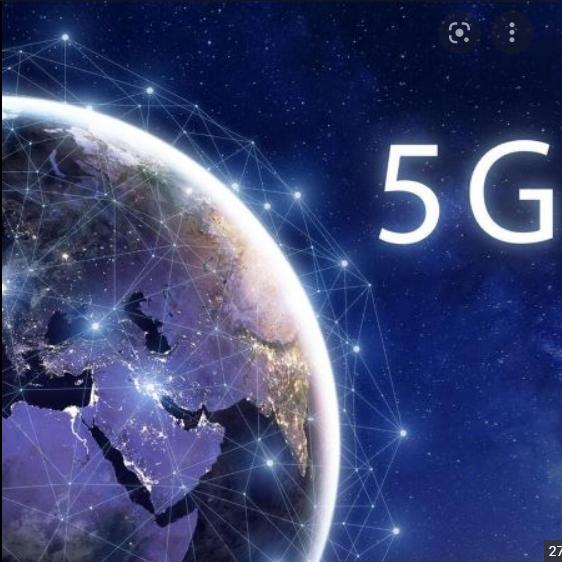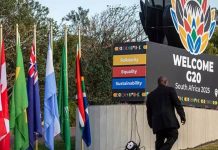Africa-Press – Ghana. 5G ecosystem continues to grow at a fast pace in all geographies. In this year alone, 5G networks grew by 22 times, 5G users increased by 500 times, and devices recorded a growth of 32 times. The good news is that this growth will continue over the next few years.
“The next ten years are the years of mobile data. New 5G-powered Fixed Wireless Access (FWA) users will be ten times more than wired broadband. By 2030, the cellular network will be transmitting more data than wired networks. More data means more revenue,” says Qiu Zheng, Wireless Marketing Director, Huawei, during a recent webinar on 5Grows Together: Wireless Innovation for a 5Gigaverse Society.
However, more data comes with its own challenges for the service providers. The network architecture needs to change to be able to address this growing data consumption. It is crucial to maximize the value of macro sites to address the problem of the limited spectrum and limited power. This is also important to build a high bandwidth foundation for network coverage.
Several new technology approaches are helping the telcos get the maximum mileage from deploying 5G:
Meta AAU for improved network performance and lower energy consumption
Typically, telcos follow the strategy of adding a new network layer for every new technology. This leads to network complexity. Further, this strategy is not possible with 5G since it uses spectrum from multiple frequency bands, and it is not possible to add several new boxes on the tower. A combination of ultrawideband and massive Multiple Input Multiple Output (MIMO) is the only way out. The next innovation direction of mMIMO is better performance and lower energy consumption.
Huawei’s Meta AAU marks a breakthrough in mMIMO coverage and energy efficiency by combining the concept of Extreme Large Antenna Array (ELAA) technology and the AHR Turbo solution. It is helping telcos reduce energy consumption by 30% and improve coverage radius by 30%.
“Compared with traditional AAUs with 192 antenna array, ELAA uses 384 antenna array, leading to more coverage but with reduced energy consumption. It is much lighter and integrated with ultra-light integrated array and SDIF technologies to enhance both coverage and integration,” explains Qiu.
Since its launch earlier this year, it has already been deployed in 20 cities in China, covering 20 million people. It is helping telcos to increase coverage, bring down energy usage by 30% while enhancing the customer experience. Meta AAU also enables service providers to reduce costs by reducing the need to put up more towers.
FDD gigaband module enables green & high-efficiency sub-3GHz sites towards 5Gigaverse
For legacy sub-3GHz spectrum evolution to ultrawideband 4T/8T and Massive MIMO is the way to go. “If we use ultrawideband technology, three boxes can become one box, thus saving space (rental), reducing power consumption and allowing the telcos to extend the channel from 4T to 8T in the FDD bands to increase capacity, coverage and performance,” explains Qiu.
Huawei’s FDD Gigaband Module has a built-in wide-band Power Amplifier which leads to better power management between spectrum from different frequency bands, different users and different beams, resulting in 30% energy power reduction. In addition, the unique intelligent beam shaping and TM4, TM9 scheduling, as well as the coordination algorithm across different bands (SingleCell), increase the Sub-3GHz spectral efficiency by up to 10 times.
The FDD Gigaband module has been commercialized in more than 100 countries with more than 100,000 shipments.
Distributed massive MIMO to address Indoor coverage challenges
Several new 5G use cases also demand ultra-high-speed, more bandwidth, and extremely low latency in the indoor environment. There are three main challenges in the 5G era in indoor coverage. First is the Quality of Service (QoS) in traditional public scenarios, like hospitals, where indoor 5G networks demand high capacity for both consumer and enterprise use cases. The second is the difficulty for telcos to proceed in-building implementation of capacity expansion when data consumption is booming fast, and the third challenge is the enterprise market, which is new for telcos and has critical demands. Distributed mMIMO coordinates indoor 4T4R small cells to perform joint beamforming and multi-user MIMO in the indoor environment.
“It is helping telcos with elastic capacity in high-traffic venues and ubiquitous Giga experience, as well as dynamic resource allocation for enterprise applications. This year we have deployed Distributed Massive MIMO on 5G lamp sites in five countries in seven scenarios and more than 1000 sites,” says Qiu.
Connecting the unconnected to achieve UN SDGs
5G is growing in popularity in most cities, but 450 million people are still not covered by the mobile network in rural areas. Since 2017, Huawei has connected more than 50 million people in more than 60 countries. In Ghana, the Government will deploy more than 2000 Huawei’s RuralStar sites in the first phase, and the ROI is expected to be achieved in 3 years. Data from the 400 RuralStar sites shows that voice traffic grows 100%, while data traffic grows 400%. It has led to an increase in GDP, employment and mobile penetration. We helped Ghana in fulfilling SDG goals.
5G RAN intelligence to maximise spectrum efficiency and improve optimisation efficiency
Rollouts of 5G networks across the world picked up pace throughout these years. As operators boost their CAPEX budgets to reap the potential benefits of 5G networks, they also face the blunt reality of rising network complexity. In addition to rising OPEX, maintenance efficiency drops while network complexity significantly increases. This further highlights the urgency of developing intelligent wireless networks. Huawei is the industry’s 1st vendor to release the 5G RAN Intelligence during MBBF in Dubai in 2021. 5G RAN Intelligence covers SingleBAND and Capacity Turbo, to promote intelligent wireless networks.
SingleBAND enables site-level multi-band convergence through intelligence in site. The solution helps operators converge multiple bands onto a single network in the 5G era. It allows flexible full-band decoupling, which through the FDD band enhances uplink, extends the TDD band coverage, and improves network capacity through full-band and multi-beam 3D coordination.
Capacity Turbo is a network-level mechanism that takes the multi-band convergence concept beyond a single site. It uses intelligent algorithms to do coordinated optimization between multi-sites and multi-band to improve network performance, enhance user experience and minimize network routine optimization costs. Through iterative parameters optimization, together with expert experience, Capacity Turbo can enable close-loop, data-driven and on-line network optimization.
Learning from green 5G projects
Earlier this year, Huawei and China Mobile initiated the Green 5G project to reduce 40billion KWH of 5G energy savings. The project also entails increasing the green energy supply by 3200 million and reducing 1600 million tons of CO2 for society. The path-breaking initiative has helped in the overall energy reduction by 50%.
“China Mobile launched `Harmony Education’ to use 5G to provide education to 400 million students in remote areas. This has brought down carbon emissions by 23 million. As part of this initiative, China Mobile also launched the Cloud Life app that helped reduce travelling by 50%. In addition, our DICT (ICT + Database) solution launched 100 applications for 15 vertical industries. Together, these initiatives have helped China Mobile to reduce carbon emissions by 400 million,” says Qiu.
Deployment of 5G is also helping several business verticals to enhance production and efficiency while enabling them to adopt more sustainable practices. For instance, 5G enables the steelmaking company XISC (Hunan Valin Xiangtan Iron and Steel Co) to increase efficiency by 15%, leading to $15 million annual benefits. Further, China Mobile and Huawei helped Jinneng Holding Group pilot 5G mining helped bring down the failure rate by 20% and increase labour efficiency by 300%. These are just some examples of how enterprises from different business verticals are using 5G for enhanced operational efficiency.
The coming few years will lead to a massive increase in data consumption, and 5G is going to enable this growth. If the right network strategies are used, 5G can help the telcos provide a high-quality digital experience to more and more people while empowering businesses and people to lead a more sustainable life. The onus is then on telcos to adopt these strategies for more optimal use of the 5G spectrum and more sustainable operations.
For More News And Analysis About Ghana Follow Africa-Press







